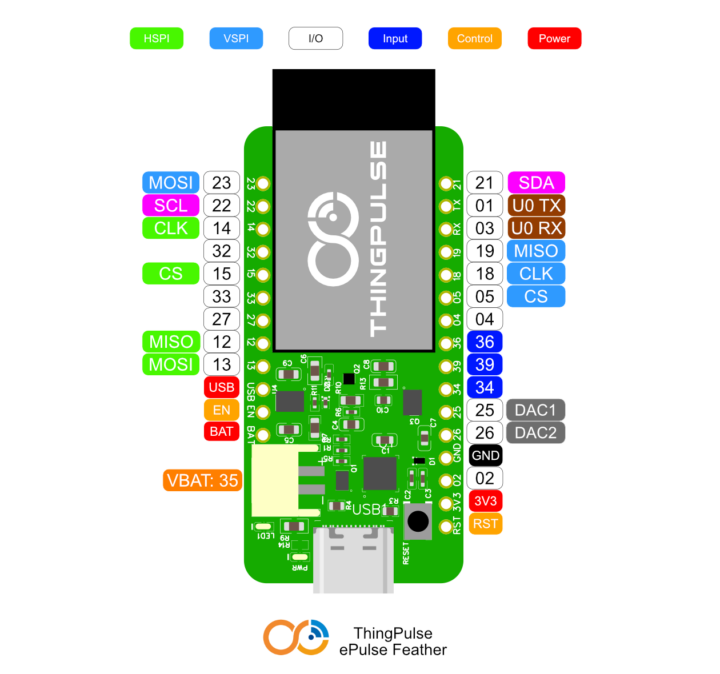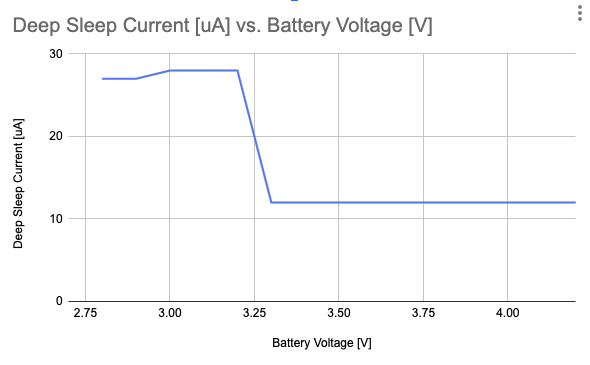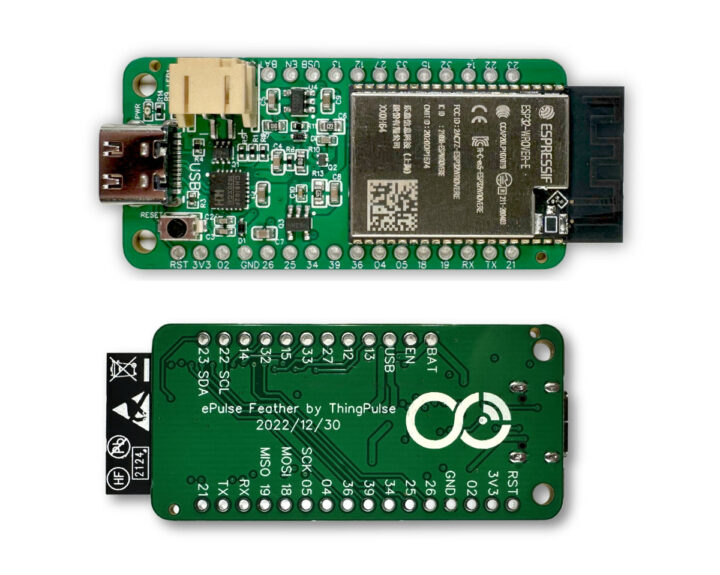Thingpulse ePulse Feather is an ESP32 development board following Adafruit’s Feather form factor and optimized for low power with 12 to 27 uA deep sleep power consumption.
The board is based on the ESP32-WROVER with 8MB Flash and 8MB SPRAM and comes with a USB-C connector for charging the battery and programming through a CH9102F UART chip, as well as the I/Os headers provided by the Feather form factor. The board can be especially useful in battery-operated WiFi remote controls for home automation or other purposes that sleep most of the time until the user presses one of the buttons.
ThingPulse ePulse Feather specifications:
- Wireless module – Espressif Systems ESP32-WROVER-E-N8R8 module with ESP32-D0WD-V3 or ESP32-D0WDR2-V3 dual-core microcontroller @ 240 MHz with 8MB QSPI flash, 8MB QSPI PSRAM
- USB – 1x USB Type-C port for power/charging and programming via CH9102F UART to TTL chip.
- Expansions – 12-pin + 16-pin headers with up to 20x GPIOs (Adafruit Feather compatible)
- Power management
- Supply Voltage
- 5V via USB-C port
- 3V3 to 6V via Vin pin
- LiPo battery support via 2-pin JST connector
- Torex XC6220B33 6V to 3.3V LDO
- Texas Instruments TP4056 battery charger
- Supply Voltage
- Power Consumption – Deep Sleep: ~12uA (at 3.3V) – See chart below
- Dimensions – PCB: 50.8 x 24.4mm; with ESP32 and USB-C connector: 58.3 x 24.4mm
- Weight – 12 grams

ThingPulse says they’ve designed the circuit so that the USB serial chip is only powered when the USB-C port is connected in order to prevent unnecessary power consumption during normal operation. The diagram below shows a significantly lower deep sleep power consumption when the battery voltage is over 3.25V, or in other words, the power consumption is lower when the battery is still well charged…

ThingPulse claims most ESP32 and ESP8266 boards consume around 100 to 130uA during deep sleep. That may be true, but we’ve covered several other ESP32 series boards with low power consumption including several following the Adafruit Feather form factor such as Adafruit’s own ESP32 Feather V2 (70uA in deep sleep), Cytron Maker Feather AIoT S3, or Unexpected Maker FeatherS3 (“ULTRA LOW Deep Sleep Current”).
As you can see some are not provided deep sleep current, but most of the boards with really low power consumption we’ve seen are based on ESP32-S2 or ESP32-S3 chips with companies claiming under 20uA power consumption with boards like the Bee S3 or Olimex ESP32-S2-DevKit-LiPo-USB, so it’s interesting to see ThingPulse claiming to have achieved something similar with an ESP32. If 12uA is still too high for your requirements, you may need to change the chip/module and go with a board based on Dialog Semiconductor DA16200 or Innophase Talaria TWO but those are less common.
ThingPulse is currently taking pre-orders for the ePulse Feather board for $12.50, or a 15% discount over the regular price ($14.95), with the boards expected to start shipping around mid-March.

Jean-Luc started CNX Software in 2010 as a part-time endeavor, before quitting his job as a software engineering manager, and starting to write daily news, and reviews full time later in 2011.
Support CNX Software! Donate via cryptocurrencies, become a Patron on Patreon, or purchase goods on Amazon or Aliexpress





